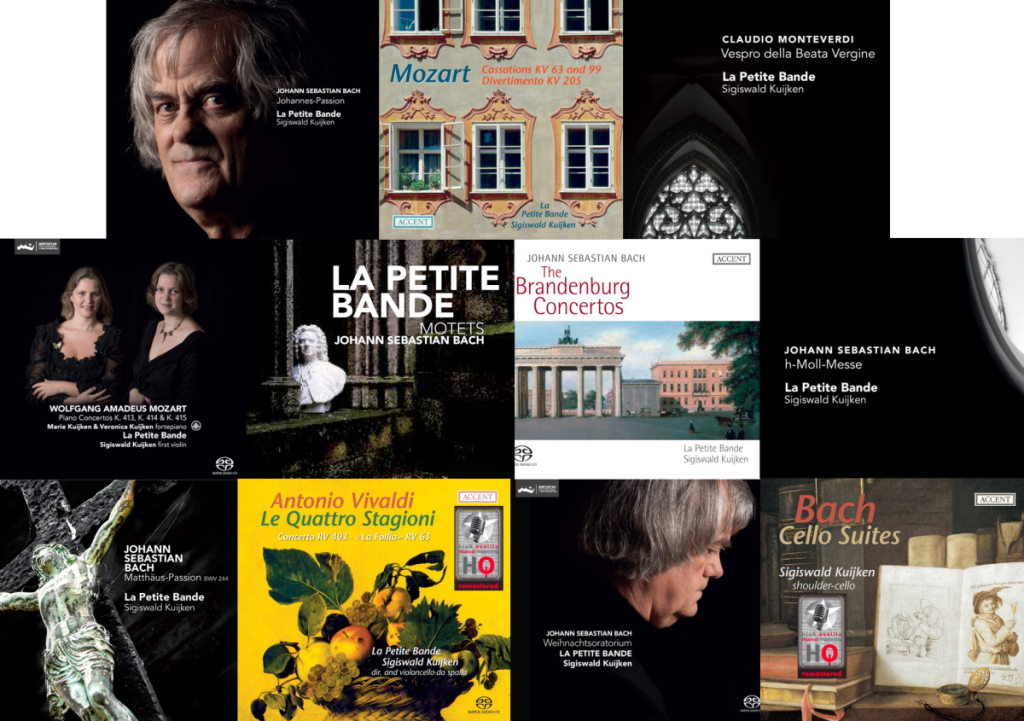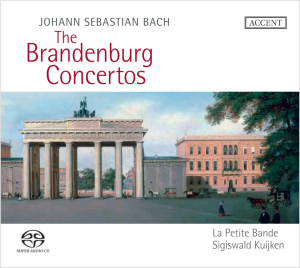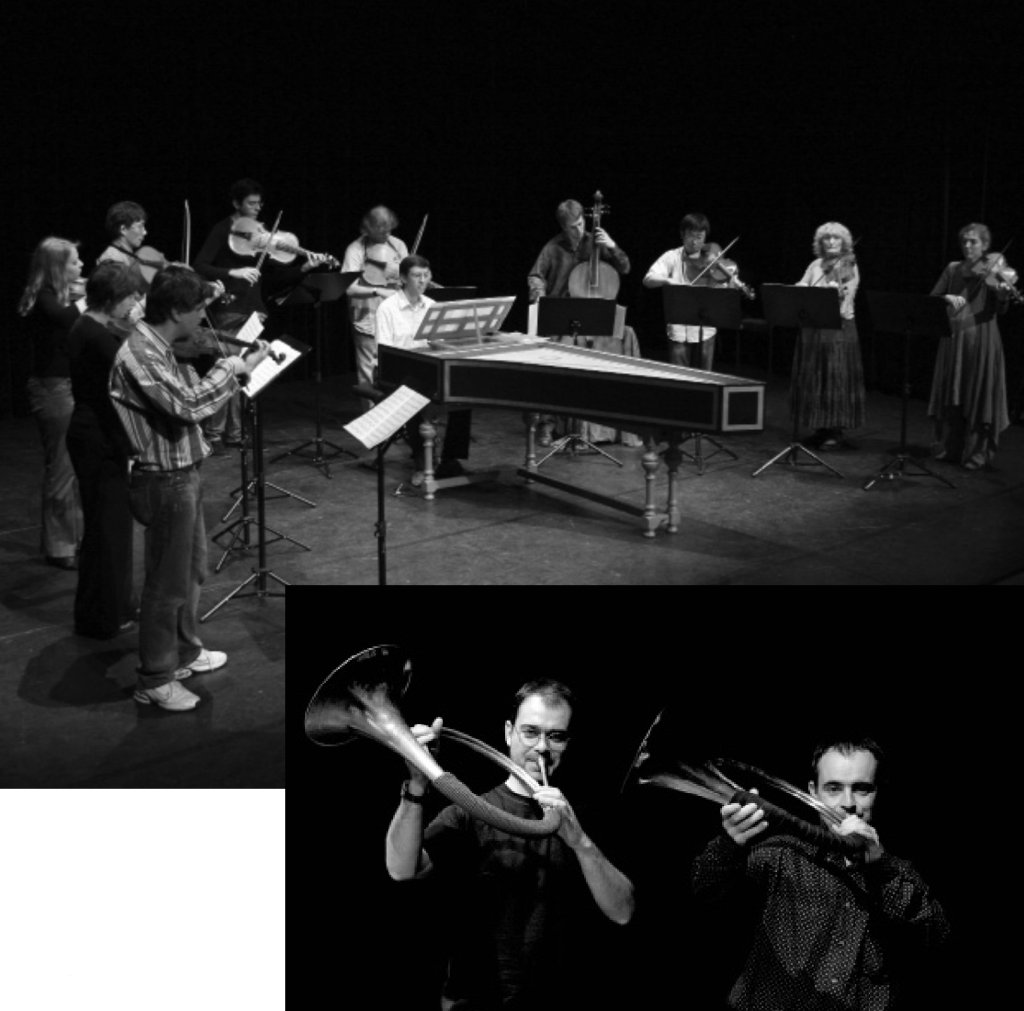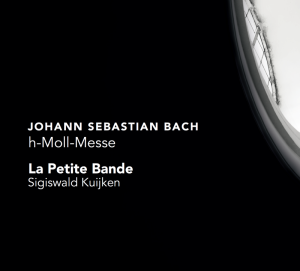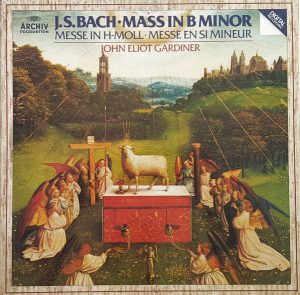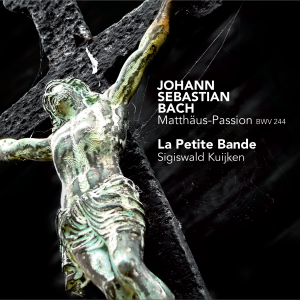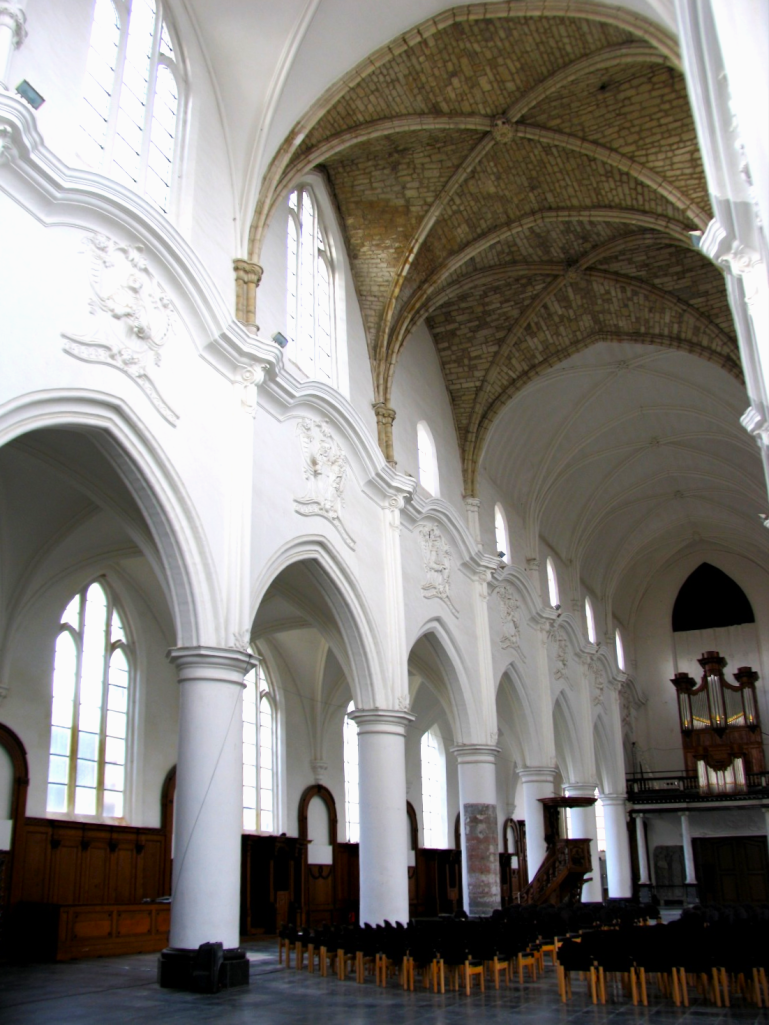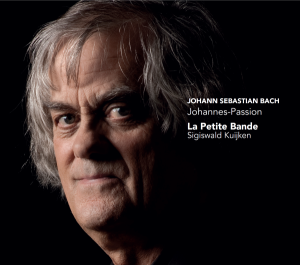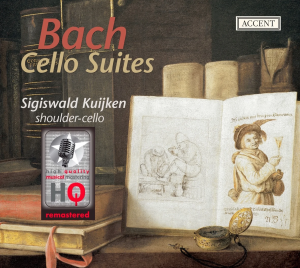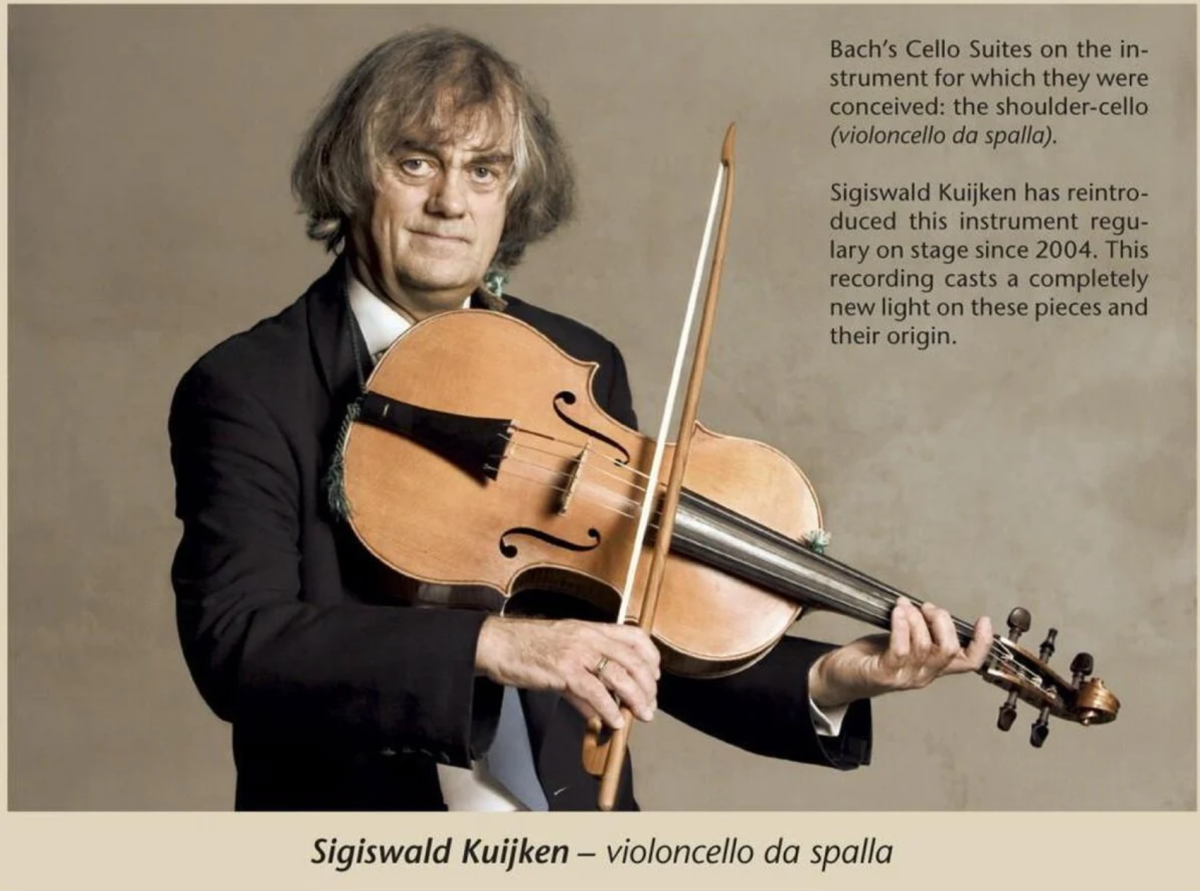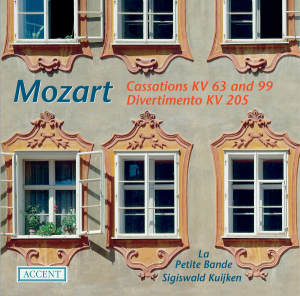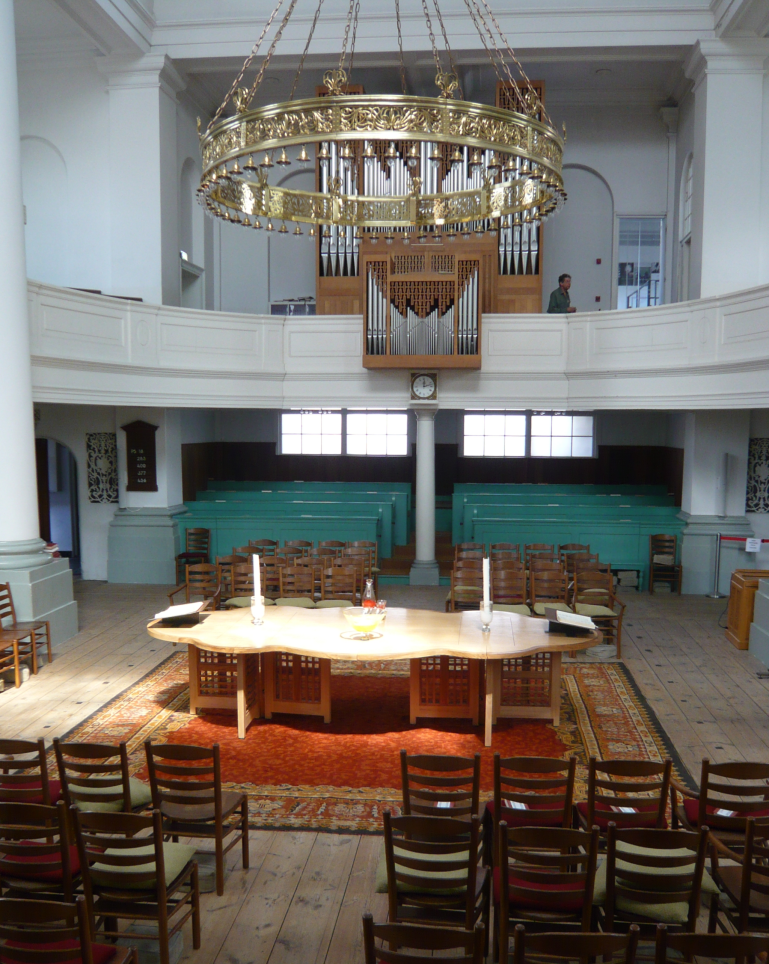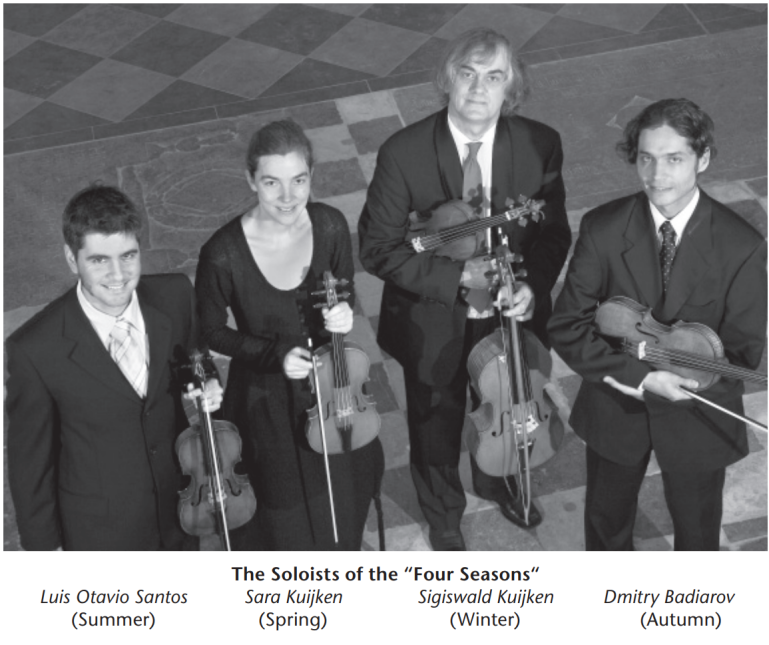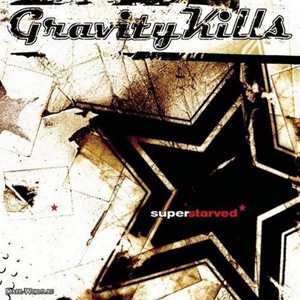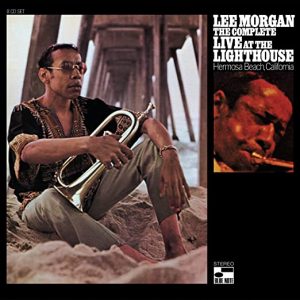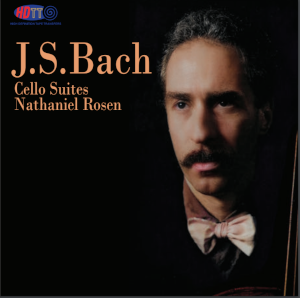With La Petite Bande's 50th anniversary in 2022, Challenge Records celebrated with the release of a nine CD box set, which you may have seen. All nice, but that's not what I want to talk about. I want to talk about something even more wonderful: the release of the original DXD recording resolution files! (HERE)
From about 2003, Bert van der Wolf was the recording and mastering engineer for Sigiswald Kuijken's recordings on the Accent label (many, most, all?). Bert has obtained permission to release the recordings he engineered in the original DXD resolution in which he recorded them, and some earlier DSD64 recordings now remastered for better sound. All are very rewarding performances, and the sound quality is so much clearer and resolved than the CDs, with the DXD resolution of the later recordings in several steps greater clarity than the SACD/DSD64!
Kuijken has been turning the period performance world on its collective ear for fifty years. His performances with La Petite Bande (which he formed in 1972) are consistently praised, but they are also controversial given his preference for using only one voice per part in his performances of cantatas and motets. This carries over to the purely instrumental recordings where the size of the ensemble is typically quite small. All of which adds to a tremendous clarity of performance, but detractors will say this also diminishes the complexity of the sonic tapestry. For me, he achieves a texture that I find most attractive, with a clarity of line that is addictive once understood for what he is working towards.
A word about my "capsule reviews" below... The music is well known, so I will not dwell there. My comments will be about my overall reactions to the approach taken by Kuijken and partners and on the sound quality. Also, I won't be comparing (much) to other performances you might consider. To me, there are many valid approaches to this music and I find value in most of them. Thus, my music library is filled with many different versions of each of these—a path I would encourage for any lover of this music.
Bach: Brandenburg Concertos, Sigiswald Kuijken and La Petite Bande. Accent, Northstar Recordings 2010, 2022 remastered (DXD) HERE
This is such a pleasure to hear in high resolution! The DXD format allow the full timbre of the instruments, and the air around them, to resolve for one's ears to savor. If you enjoy historically informed performance practice done to the nines, there is no better source than La Petite Bande and this recording.
If you look at the rehearsal session photo below you'll get a sense of what I mean. Instead of the viola da gamba or the cello what Kuijken prefers to use is the shoulder cello (or violoncello da spalla). You will see him standing just behind the harpsichord with this spalla in place on a strap around his neck. The instrument to the right of him that looks like a cello is a bass viole (basse de violon). The other string instruments are violins and violas.
In "Concerto No. 1" and also in the opening movement of "Concerto No. 2" with its amazing tromba solo, instead of horns with valves, we get valveless horns and trumpets—so much harder to play, so very interesting in timbre and fit to the rest of the instruments. And the oboes, bassoon, recorders rather than flutes, are all similarly of a very different timbre (very woody) compared to modern instruments.
Kuijken's use of HIP practice (and even his choices within HIP practice) are not to everyone's tastes. Some may call Kuijken a devotee of the hair shirt—something you wear for penance or as a reminder of your sins or to demonstrate your humility. Not me! I love what he does. His performances are minimalist even by other HIP practitioners' standards, but there is something eminently freeing about his approach. The music is pared to its most concentrated form. His music is like a wonderful wine sauce reduction—intense, highly flavorful, something that sings in your mouth.
And the recording quality? Oh my, the recording quality is just marvelous. Recorded October 19-23, 2009, at Galaxy Studios, Mol, Belgium, it is a Bert van der Wolf tour de force with all of the detail, air, sense of space, and wonderfully accurate capture of the instruments—sounding like real instruments recorded in a real, natural acoustic space. Bravo.
Get ready, you're going to read me saying this a lot about each of the recordings below.
Rehearsal session photos for La Petite Bande
Bach: Mass in B Minor, Sigiswald Kuijken and La Petite Bande. Accent, Northstar Recordings 2010, 2022 remastered (DSD64, the original recording resolution) HERE
Listening to Kuijken's Mass in B Minor is like a enjoying a refreshing breeze. The sound is light, open, highly resolved, and immensely articulate. Gone are layers of encumbering, lumbering sound. Instead, one has the essence. A minimal number of vocalists, a spare but completely satisfying complement of instruments, and a resulting transparency of sound. When Ann listened to this performance early one morning, I heard from her over coffee: "What a joy to hear something sounding so fresh and alive." And she is exactly correct. I share her enthusiasm.
Recorded 16-19 March 2008 at San Lorenzo de El Escorial (Spain), Teatro Auditorio, this is the first of the three great Bach religious vocal works that Kuijken was to perform with La Petite Bande over the next several years (see below for the other two). And is sets the stage for a reimagining of how these works can be performed, and a polar opposite contrast to the great recorded version by John Elliott Gardiner on Archiv from 1985, the recording on which I imprinted and still greatly love.
Gardiner is is lightly sprung but with large chorus and corresponding larger complement of performers. It is utterly gorgeous, but also of a highly refined spun gold and taffeta nature.
In contrast, Kuijken's performance is similarly alive, but dignified. It entirely avoids mannerism and fussiness. Best characterized as a performance filled with solid strength, Kuijken is not afraid of genuine grandeur when called for (as in the Gloria or Et Resurrexit), but he entirely eschews effects purely for display. And yet, he maintains a subtle and well-chosen variation of tempi that avoids any deadening sense of sameness.
If Gardiner is High Church, Kuijken is solidly down-to-earth Lutheran-Protestant—completely practical, bringing a craftsman's beauty of sound in simplicity versus the high artisan's elaborate ministrations. Neither is the better conception. They are simply very different. They serve different aesthetic viewpoints. And, I am so pleased to have both from which to choose as my mood may vary.
The recorded sound of the Kuijken performance is superb. Detailed, transparent, fully realistic. Recording engineer Bert van der Wolf has engineered a marvel of detail and balance in this DSD64 recording to which I'm listening: balance of direct and reflected sound, balance of voice and instruments, balance of instruments among each other, all with immense clarity. And when power is applied by the performers, the recording fully encompasses and delivers that power and brilliance of sound. And in the excellence of the sound quality is where this Bert van der Wolf recording (23 years later) separates itself from the earlier Archiv recording. As much as I admire the Archiv recording quality for it's time, the Bert van der Wolf recording is devastatingly superior in all respects. Very satisfyingly done.
Most highly recommended!
Bach: Matthäus-Passion (St. Mathew's Passion), Sigiswald Kuijken and La Petite Bande. Accent, Northstar Recordings 2010, 2022 remastered (DXD) HERE
This is a magnificent and transparent recording. And it is very different than the ground-breaking recording of 20 years earlier when Kuijken was concert master, Gustav Leonhardt was conductor, and Rene Jacobs sang the alto, and the performance sported a full choir. Here, no separate choir. No counter-tenor. Kuijken leads from his position in the ensemble as first violin. Instead of a choir, the soloists sing together as needed. The ensemble is stripped down to the bare essentials—this is no monumental 19th century performance.
Kuijken tells us in the liner notes, "Everything indicated that Bach never intended his church music to be performed by a choir in the current sense of the word. Like his fellow kapellmeisters in other cities, it cost him enormous effort to get even a choir of eight singers together. A famous letter has survived in which Bach asks the Leipzig city council for twelve good singers. In the hope of getting eight, he asked for twelve."
Kuijken's approach was fairly radical even as late as 2010. But it all works. It has clarity, it has precision—like a surgeon's scalpel. Sliced away is all the added fluff. In its place is a purity of voice and sound that is more like madrigal singing, not choral singing. It also has a direct intensity with just the individual voices that performances using larger forces miss. I like it. I feel refreshed by it, and deeply moved listening to it.
Summing up, Kuijken explains, " As soon as you're working with good voices, there can be no more problems. Beautiful things always fit together. And thanks to the more compact vocal ensemble, the instrumental vocal balance is also clearer now."
Recorded 5-9 April 2009, at Predikherenkerk, Leuven, Belgium, we once again hear that delightful natural acoustic reverberation coupled with in Bert's iconic balancing of reverberant and direct sound.
Predikherenkerk, Leuven, Belgium (photo courtesy Creative Commons HERE, edited for perspective and lighting balance)
Bach: Johannes-Passion, Sigiswald Kuijken and La Petite Bande. Accent, Northstar Recordings 2011, 2022 remastered (DXD) HERE
During Bach's lifetime there were four different performances of the St. John's Passion, each time with new modifications, some in response to the circumstances at the time, others influenced by which musicians and instruments he then had at his disposal. Musical historians, like Kuijken, can tell us all about the variations. Let it suffice for this article to note that Kuijken chooses the first performance of 1723 in Leipzig to follow for this recording. He comments, "The process of determining the most probable historical truth continues to have elements reminiscent of a detective novel; anyway, it will never be possible to clarify certain details."
What clearly is to be heard in this performance is the aesthetic that Kuijken applies in all of this performances of the Bach choral works: clarity of voice, limited numbers of performers, vocal soloists serving together for the chorus, authentic instruments for the period. His view is that, above all, these religious choral works by Bach were about the text: "This music is first and foremost vocal music: the text, the message is paramount. It is also significant that this soloistic approach creates an extremely natural balance with the instrumental ensemble."
As far as instrumentation is concerned, Kuijken is clear in his opinion: "This calls for modest instrumental forces: two first violins, two second violins, one viola, two basses de violon, two flutes, two oboes and organ. No bassoons (there is no trace of this instrument to be found in the material, certainly not in the earliest version), although these days the instrument is mostly included: whenever the oboes play, a bassoon is also added. It is thus commonly thought that this was always the case, a point that I definitely dispute..."
Just how spare a complement of musicians Kuijken uses in this performance is made clear in the liner notes: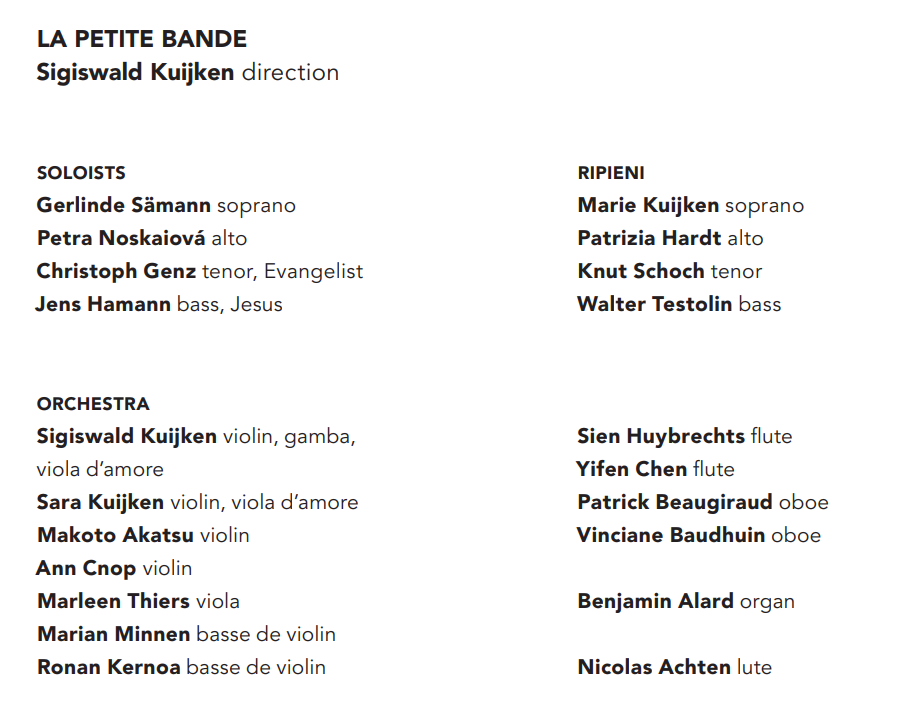
And thus we have a performance of great clarity. Which in many ways is most fortuitous for us a listeners because the libretto is a complete hodge-podge of source material. Says Kuijken, "In contrast to the St Matthew Passion libretto, which was written by a single librettist, the libretto of the St John Passion is a patchwork, a hotchpotch, a puzzle made up of diverse, pre-existing texts, possibly compiled by Bach himself and taken from the gospels, old chorales, poetry by B.H. Brockes, C.H. Postel…" And, in many ways, this "hotchpotch" is what makes the St. John's Passion such an interesting work.
Recorded 17-20 April 2011 at Academiezaal, St. Truiden, Belgium.
Bach Suites for Solo Cello, Sigiswald Kuijken, played on shoulder-cello. Accent, Northstar Recordings 2008, 2022 remastered (DXD) HERE
Shoulder-cello? Well, yes! This was actually the instrument for which Bach wrote these pieces. Larger than a viola, much smaller than a full size cello, the sound sits somewhere between the two. It has a full rich tonal range (even growls in the bass registers) and a bit more agile, flexible sound than a modern cello. Well worth hearing!
And, of course, the performances are all that one would expect from such a superb musician as Kuijken. Precisely controlled, delicately nuanced, expressive while not in the least romanticized. Filled with the flexible rhythms of the dance, yet maintaining nice forward momentum throughout, Kuijken's performances are a delight to hear. If they don't quite sing with the effortless grace of the Janos Starker classic performances on modern cello, they nonetheless bring a very nice alternative view of the suites which I welcome. And the timbre from the period shoulder-cello and bow creates a different interplay across the lines Bach's music.
The sound quality of the recording is once again that nice balance of direct sound from the instrument and the ambiance of the room. The direct sound is pretty closely mic'd, but the resonance of the instrument is allowed to bloom in the natural acoustic of the recording venue and thus to bring forth the full timbre of the instrument with all it's lovely overtones. Again, that trademark balance that Bert van der Wolf delivers in his recordings, fully evident as early as 2007 when this was recorded at Galaxy-Studios Mol, Belgium—just a beautiful sounding recording space. If you have the chance to hear these in their full DXD sound quality, with all it's greater timbral density than the lesser resolution formats (Qobuz, et al), I think you will relish them.
Mozart: Cassations & Divertimento, Sigiswald Kuijken and La Petite Bande. Accent, Northstar Recordings 2006, 2022 remastered (DXD) HERE
First to understand about this music: it is "stroll about town" music. Not dance music. Not salon music. Not concert hall music. It was written literally to be played as open-air music following (and to some extent during) a parade about the town. The first work, KV63, was written by the 13-year old Mozart and is filled with rather sly digs at the university students and literati for whom the work was intended. So, please attune yourself not to look for the mature Mozart, but rather the radical young genius seeking to prove that he was ready (already) for greater things.
And this is how La Petite Bande performs these works: simply, directly, and with precision, but without an excess of pyrotechnics. Pleasant, light listening. Filled with violins, a couple violas, a double bass, two horns, oboes, bassoon and harpsichord. But no viola da gamba, no trumpets and no percussion. All rather sonorous (with sly asides). Once again in excellent sonics with the nice clear acoustics of the 17th century Doopsgezinde Kerk Haarlem.
Recorded 23-26 October 2006 at the Doopsgezinde Kerk, Haarlem. Bert comments about this remastering of this album: "This recording was one of the first made in DXD after I adopted this format in 2005 (dCS prototype ADC), still revolutionary in 2006 and most likely one of the first recordings fully processed in 352,8kS/s/24-bit! I decided to have another go on the mix for the master files, now 16 years later with the progressive insight about and acquired tools over the years for this stunning high resolution. It was a pleasure to find the hidden gems within these tracks."
Recording venue for Mozart Cassations: Doopsgezinde kerk, Haarlem (Courtesy Creative Commons)
Vivaldi The Four Seasons (Le Quattro Stagioni), Sigiswald Kuijken and La Petite Bande. Accent, Northstar Recordings 2007, 2022 remastered (DXD) HERE
Would you enjoy a completely different experience listening to Vivaldi's hoary chestnut, The Four Seasons? Enjoy this performance by Kuijken and La Petite Bande. It will introduce your modern ears to a completely new (but historical) experience of the music. Unlike so many modern recordings of this work, this performance is done with a single instrument per single part—no instruments are doubled. It is pure chamber music in the most classic sense. Just the number of instruments needed for each part to have a single instrument performing it. No chamber orchestra sonorities.
Kuijken, in his liner notes, is very clear about his intentions here. He differentiates music of the concerto grosso category to that of the concerto into which he contends The Four Seasons was intended. He writes:
"In the concerto grosso a small solo group (the so-called 'concertino': for the most part 2 violins and a "violoncello") is placed opposite a larger group (the concerto grosso), and this latter group can be extended at will through doubling the parts: for example, five first violins in unison, five second violins etc., and even doubling the basso continuo part with a violone or a double-bass, often sounding an octave lower than written... The works in this "grosso" form are conceived accordingly, and are played for greater occasions.
"The concertos, however, which do not belong to this category and are simply called "concerto," are basically thought of as if each individual part was for a soloist; without any doubling...
"Thus, the transparent sound of five solo strings and harpsichord in the "Seasons" works fundamentally as more experimental and richer in colour than is possible with a chamber orchestra."
And Kuijken's description of "transparent sound" is exactly what I hear and find so striking about this performance. It has a clarity of line, a characterful range of color, and a sparkling energy, that is most enticing. While this recording has been in the catalog since it's original release by Accent in 2007, U.S. readers may not have heard it given Accent's rather limited distribution here. Those in Europe will have had much greater access. The point being that, by now, Kuijken's approach may be well known but at the time it was pretty revolutionary in the world of baroque music performances.
The album opens with Vivaldi's Concerto in D, RV403 for cello, in three movements, before launching into The Four Seasons. This is a lovely entrance--it introduces us to the soundscape that will be coming and also introduces us to the use of the "shoulder-cello" or violoncello da spalla discussed in the review above of the Bach Suites for Solo Cello. It is the shoulder-cello that Kuijken uses in this concerto and it is this lighter sounding instrument that creates the very different overall texture of this performance of the work. Kuijken continues use of the shoulder cello in The Four Seasons, obtaining an overall clearer and lighter texture to the music.
The concluding work on the album is the ever-welcome La Follia, based on the Follia tune that was well-known throughout Europe in Vivaldi's time with roots from centuries earlier. Again, the lighter and more flexible texture of Kuijken's instrumentation (including his use of the should-cello) works exceptionally well here.
What is striking about this reissue via the Spirit of Turtle website (linked above) is the greater resolution and clarity provided in this new mastering by Bert van der Wolf from his original DXD files. Recorded 8-10 November 2006 in the Hervormde Kerk at Haarlem/Holland, Bert says of this recording that it was "among the very first made in DXD after I adopted this format in 2005 (dCS prototype ADC), still revolutionary in 2006 and most likely one of the first recordings fully processed in 352,8kS/s/24-bit! I decided to have another go on the mix for the master files, now 16 years later with the progressive insight about and acquired tools over the years for this stunning high resolution. It was a pleasure to find the hidden gems within these tracks."
The sound quality is certainly exquisite in this new DXD release. Highly recommended!
Images courtesy of Northstar Recording Services, except as noted.




